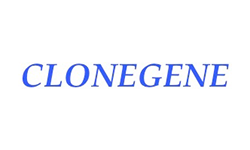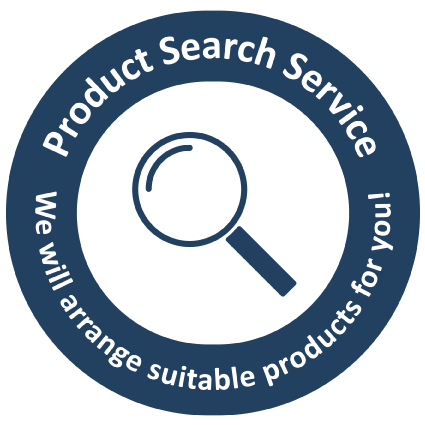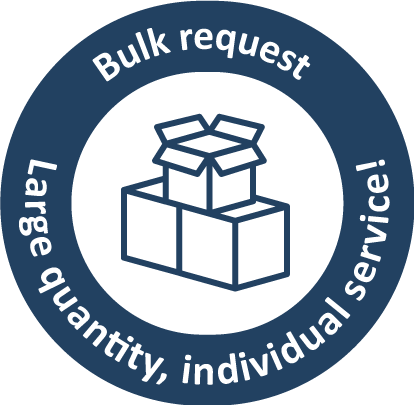Clonegene

Clonegene designs, generates and distributes quality reagents relevant to Virology and Oncology. These include high affinity monoclonal antibodies against Viral targets, Onco-Immune pathways, Gene expression regulators and Tumor neoantigens.
Their product portfolio includes
Specific TAG Antibodies
- Myc tag Antibody 9E10
- Myc tag 5A5 (CHIP grade)
- Anti-GST Monoclonal
- Anti-GFP [F56-6A1.2.3]
Tumor Targets
- Anti-EGFR monoclonal 225 (cetuximab)
Recombinant Neoantigens
- CGP005 - HuD (Elavl4) / Paraneoplastic Antigen for detection of anti-Hu antibodies / AUUUA element binding Protein
- CGP006 Recombinant HuD E Neoantigen
Anti-Neoantigen Antibody
- CGP006 Recombinant HuD E Neoantigen
- CG 0062 Biotinylated Antibody against HuD E Neoantigen
- CG0027 Anti-HuD Monoclonal Antibody (ChIP Grade) 15A9
- CG005 Anti-HuD/HuC/HuB Antibody Monoclonal Antibody 16A11
- CG083 Anti-HuD/HuC/HuB Monoclonal 8B3 ( RIP/CHIP grade)
Tumor Checkpoint Pathway
- CG072 Anti-CD20 Monoclonal 2H7
- CG047 Anti-CD19 Monoclonal 4G7
- CG0110 Anti-PD-1 Monoclonal J110
- CG0042 Anti-PD-L1 Monoclonal Antibody 29E.2A3
Gene Regulation
- CG016 Anti-Dicer Monoclonal Antibody 4A6
- CG031 Anti-Dicer Affinity Purified Rabbit Antibody 13D6R
- CG001 Anti-HuR Monoclonal Antibody 19F12
- CG0098 - ChIP grade Anti-HuR mouse monoclonal antibody 4C8
Viral Antibodies
- CG005 Mouse monoclonal (5B12) to HIV GP120
- CG0021 Mouse Monoclonal HB65 to Influenza A NP
- CG 0042 Anti-Zika Virus Monoclonal D1-4G2-4-15
Background TAG Antibodies
Anti Myc tag Monoclonal 9E10 / Anti-Myc tag Monoclonal Antibody 5A5 (ChIP grade)
A myc tag is a polypeptide protein tag derived from the c-myc gene product that can be added to a protein using recombinant DNA technology. It can be used for affinity chromatography, then used to separate recombinant, overexpressed protein from wild type protein expressed by the host organism. It can also be used in the isolation of protein complexes with multiple subunits. A myc tag can be used in many different assays that require recognition by an antibody. If there is no antibody against the studied protein, adding a myc-tag allows one to follow the protein with an antibody against the Myc epitope. Examples are cellular localization studies by immunofluorescence or detection by Western blotting. The peptide sequence of the myc-tag is N-EQKLISEEDL-C, where N stands for Amino-terminus and C stands for Carboxy terminus. The tag is approximately 1202 Daltons in atomic mass and has 10 amino acids. It can be fused to the C-terminus and the N-terminus of a protein. It is advisable not to fuse the tag directly behind the signal peptide of a secretory protein, since it can interfere with translocation into the secretory pathway. Monoclonal 9E10 is the classic reagent to detect the Myc tag and has been cited in over one thousand publications. Monoclonal 5A5 was selected by its excellent performance in ChIP analyses.
Anti GST Monoclonal 5C12 - ChIP Grade
GST can be added to a protein of interest to purify it from solution in a process known as a pull-down assay. This is accomplished by inserting the GST DNA coding sequence next to that which codes for the protein of interest. Thus, after transcription and translation, the GST protein and the protein of interest will be expressed together as a fusion protein. Because the GST protein has a strong binding affinity for GSH, beads coated with the compound can be added to the protein mixture; as a result, the protein of interest attached to the GST will stick to the beads, isolating the protein from the rest of those in solution. The beads are recovered and washed with free GSH to detach the protein of interest from the beads, resulting in a purified protein. This technique can be used to elucidate direct protein-protein interactions. A drawback of this assay is that the protein of interest is attached to GST, altering its native state.
A GST-tag is often used to separate and purify proteins that contain the GST-fusion protein. The tag is 220 amino acids (roughly 26 KDa) in size,which, compared to tags such as the Myc-tag or the FLAG-tag, is quite large. It can be fused to either the N-terminus or C-terminus of a protein. However, many commercially available sources of GST-tagged plasmids include a thrombin domain for cleavage of the GST tag during protein purification. Mab 5C12 is a high affinity mouse monoclonal directed against GST. It has been independently validated by the Online Antibodies validation program and can detect at least 1ng of GST protein. Its high affinity makes it the antibody of choice for ChIP studies
Anti-EGFP Monoclonal Antibody [F56-6A1.2.3]
The green fluorescent protein (GFP) is a protein composed of 238 amino acid residues (26.9 kDa) that exhibits bright green fluorescence when exposed to light in the blue to ultraviolet range. Although many other marine organisms have similar green fluorescent proteins, GFP traditionally refers to the protein first isolated from the jellyfish Aequorea victoria. The GFP from A. victoria has a major excitation peak at a wavelength of 395 nm and a minor one at 475 nm. Its emission peak is at 509 nm, which is in the lower green portion of the visible spectrum. The fluorescence quantum yield (QY) of GFP is 0.79. The GFP from the sea pansy (Renilla reniformis) has a single major excitation peak at 498 nm. In cell and molecular biology, the GFP gene is frequently used as a reporter of expression. In modified forms it has been used to make biosensors, and many animals have been created that express GFP as a proof-of-concept that a gene can be expressed throughout a given organism. The GFP gene can be introduced into organisms and maintained in their genome through breeding, injection with a viral vector, or cell transformation. To date, the GFP gene has been introduced and expressed in many Bacteria, Yeast and other Fungi, fish (such as zebrafish), plant, fly, and mammalian cells, including human. CG099 is a high affinity monoclonal antibody directed against GFP.
Search for products by Clonegene
Clonegene products by Product Category
Clonegene products by Research Area
Any other questions?
If you have any questions, we are always at your disposal.
If you have not found a product, just send us a request and we'll take care of the rest.
Feel free to use our online services for your request.
Our Online-Service







